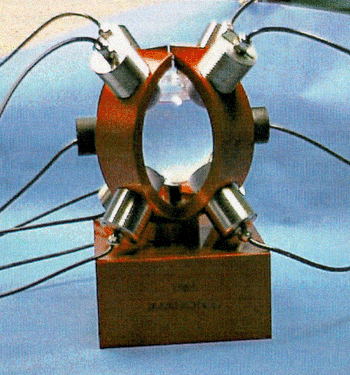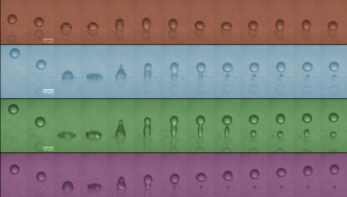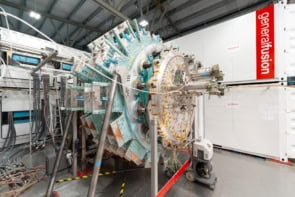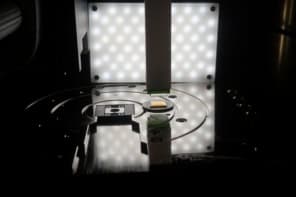When a gas bubble trapped in a liquid is destroyed by a sound wave, it can – under certain circumstances – emit light. The origins of this ‘sonoluminescence’ are still unclear, but a technique developed by physicists in France could help to test theories of the effect. Mathias Fink and colleagues of Université Denis Diderot created a device that increased the intensity of light emitted by such a bubble, and accelerated its collapse. The technique could even lead to a novel method for sparking nuclear fusion (J-L Thomas et al 2002 Phys. Rev. Lett. 88 074302).

The pressure variations of a sound wave can make a gas bubble in a liquid periodically shrink and grow. At certain temperatures and pressures, the bubble may implode to generate a huge pulse of energy, which leads to the emission of photons. Many physicists believe that the gas inside the collapsing bubble is rapidly compressed and becomes so hot – typically 20 000 to 30 000 kelvin – that it becomes a plasma.
Most studies of sonoluminescence have focused on the effect of adjusting the pressure on the gas bubble – that is, using different frequencies and intensities of sound waves. But these experiments have been hampered by the narrow range of conditions under which sonoluminescence will take place.
According to Fink and co-workers, their technique overcomes these limitations. They filled a spherical glass cell with water and trapped an air bubble by focusing a 28 kHz standing wave onto it. This caused the bubble to oscillate in size between 5 and 50 micrometres in radius. Just as the bubble was about to collapse, the team switched on eight 700 kHz generators that were evenly spaced around the cell. These signals interfered constructively with the lower-frequency waves and made the bubble collapse more quickly, emitting nearly twice as much light as it did without them.
The team believes this method can be modified to make the bubble collapse even faster, which would lead to greater light intensities. This would allow physicists to study the relationship between pressure, light intensity and temperature in sonoluminescence in more detail.
Some physicists have suggested that a rapidly collapsing bubble could be used to compress nuclear fuel in order to initiate fusion reactions, although team member Jean-Louis Thomas emphasizes that this is some way off. Lasers are currently used to squeeze the fuel pellets in this technique, which is known as inertial confinement fusion.
‘The work done so far on sonoluminescence is largely academic and aimed at understanding the physics involved’, Thomas told PhysicsWeb. ‘We are still a long way from fusion but it doesn’t seem impossible’.



